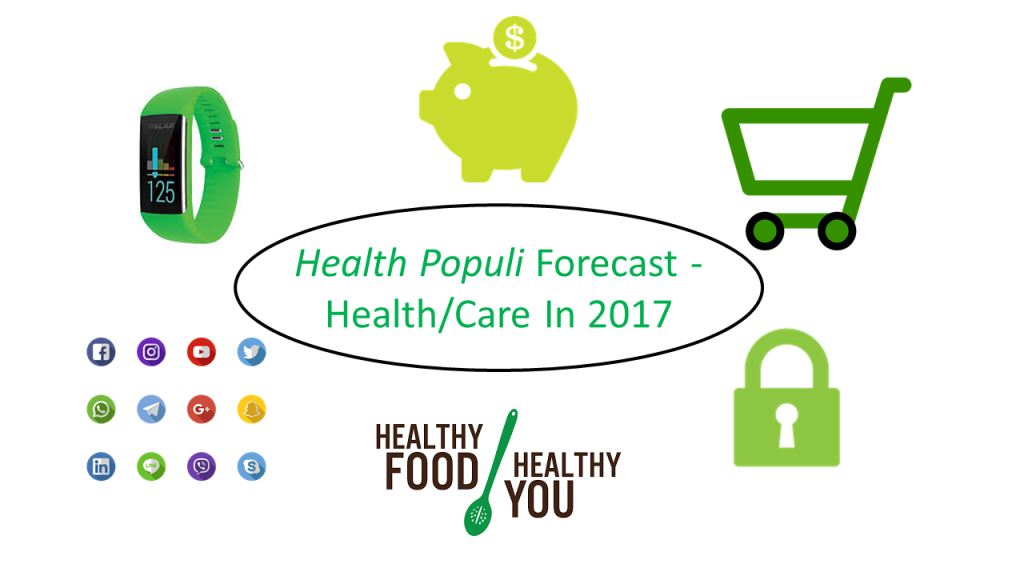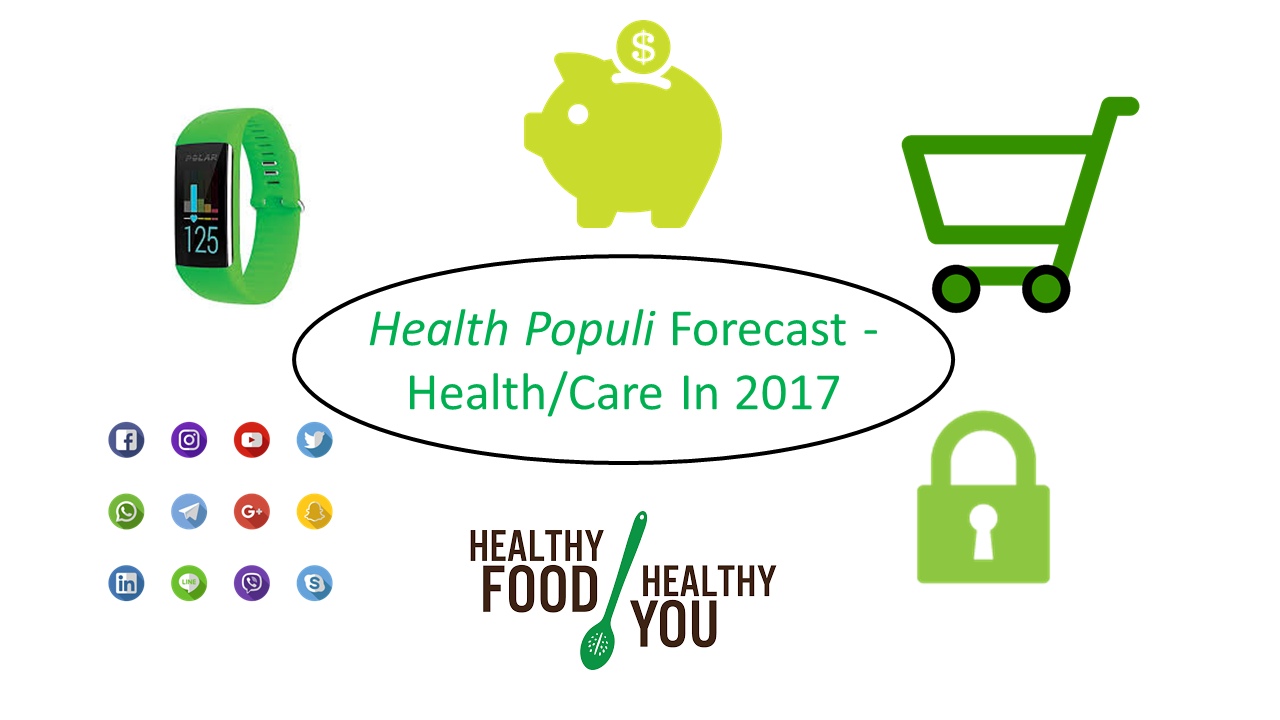 Health citizens in America will need to be even more mindful, critical, and engaged healthcare consumers in 2017 based on several factors shaping the market; among these driving forces, the election of Donald Trump for U.S. president, the uncertain future of the Affordable Care Act and health insurance, emerging technologies, and peoples’ growing demand for convenience and self-service in daily life.
Health citizens in America will need to be even more mindful, critical, and engaged healthcare consumers in 2017 based on several factors shaping the market; among these driving forces, the election of Donald Trump for U.S. president, the uncertain future of the Affordable Care Act and health insurance, emerging technologies, and peoples’ growing demand for convenience and self-service in daily life.The patient is increasingly the payor in healthcare. Bearing more first-dollar costs through high-deductible health plans and growing out-of-pocket spending for prescription drugs and other patient-facing goods and services, we’re seeking greater transparency regarding availability, cost and quality of services. This year, one in five ER visits caused consumers sticker shock with surprise bills, even when patients did the right thing by going to health care providers that were listed as “in-network” in their health insurance plans.
Patients are indeed morphing into consumers, a HealthMine survey found: 63% of people said insurance coverage was the top factor when choosing a doctor. A mere 28% of people sought doctors based on expertise that met their needs.
Patients are also becoming healthcare consumers as they face greater economic burdens for high-cost specialty drugs. The topic of financial toxicity for medicines, separate from the clinical/physical toxicity (side effects) that patients can experience, is now a mainstream phenomenon for families facing paying for expensive therapies to deal with cancer, Parkinson’s disease, and other conditions for which new-new drugs are coming out of pharmaceutical pipelines. In 2016, the poster-child for high-cost drugs was the EpiPen, which resulted in the collective outcry of parents whose children deal with serious allergies; the story made People magazine’s “Passages” page in September. In response, this week, Mylan, the maker of the EpiPen, announced a half-priced generic equivalent, and Sanofi plans to compete with a lower-cost version.
In 2017, more healthcare consumers will appreciate how financial wellness is integral to overall health. According to the Center for Financial Services Innovation (CFSI), most consumers are only “coping” or “vulnerable” on the financial health spectrum, versus “healthy.” CFSI sees banks, credit unions and service providers as the doctors and nurses around financial health. Consumers are looking to become more involved in partnering with financial institutions for overall health.
Health/care industry stakeholders will work hard in 2017 to promote consumers engagement in their health and healthcare. We’ve seen evidence of this in 2016 via CIGNA’s ad campaign featuring the so-called TV Doctors of America: Hawkeye Pierce (from M*A*S*H), Dr. McDreamy (from Grey’s Anatomy), et. al., promoting patients’ knowing their health numbers (blood pressure, cholesterol, blood sugar, and BMI) and acting on them. CIGNA is enabling people to, “Go. Know. Take Control” with the help of the MyCIGNA mobile app, available on IOS, Android, and Blackberry formats.
That connects to the next forecast point: that peoples’ embrace of digital health will grow in 2017. In 2016, one-half of U.S. health consumers were digital health adopters, based on Rock Health’s survey. These advanced digital health users had adopter at least three kinds of tools, such as telemedicine, wearable technologies, and mobile apps. Just 12% of U.S. adults were non-users, down from 20% in 2015.
Thus, most patients-as-everyday-people will take on more DIY, self-health tools, in 2017. Employers, health plans and providers are entering the platforms era of technology, serving up portals and websites that help health consumers help themselves to information and tools for self-care knowledge and management. The pharma industry, long overdue to deliver “value beyond the pill,” is part of this trend. This month, Pfizer launched the Moodivator app to work with its depression medication, Pristiq, enabling consumers who use the drug to manage mental health to keep mood journals and track their health over time and learn what factors influence personal wellness.
Looking for convenience, accessibility, and value-priced healthcare, more patients will also self-select virtual care and healthcare services outside of traditional channels away from hospitals and doctors’ offices. Surescripts’ consumer poll found most U.S. patients seek connected healthcare services: 1 in 2 people expect doctors to offer remote visits (a la HIPAA-compliant Skyping for care), and one-third of people expect most doctor’s appointments will be virtual in the next ten years. This actually won’t take a decade to realize: if you’re a patient in the Kaiser-Permanente system, a majority of patient visits are already virtual.
Beyond virtual care with healthcare providers, more consumers are looking for self-care via wearable technologies. While there’s evidence that people often disband use of activity trackers (essentially digital pedometer devices), a new breed of wearable tech is getting more fashionable, integrating user-centered design based on ethnographic research, and more engaging to use. The 2017 CES (Consumer Electronics Show) will be held in Las Vegas in January, and I’ll be there to kick the tires on these new things that, while they may be shiny, some promise to be built on solid consumer research and lessons learned from Version 1.0 wearable tech.
In 2017, these devices will be increasingly adopted by pioneering health plans and employers who are refocusing wellness programs more toward building a culture of health. The most successful programs will be built on platforms that help people track many aspects of health and wellness beyond “steps,” incorporating rewards, games, and social connections between workmates, friends, and virtual peers and patients. Fitbit’s employee wellness program currently serves over 1,000 employers; expect other suppliers to offer such services that engage workers in self-health and (potentially) enchant employers paying for health insurance.
The use of wearable tech and the Internet of Things (IoT) will continue to grow in health in 2017. Along with this phenomenon, there will be the growing challenge of data privacy and security. “Data is the new material for fashion,” asserted Sonny Vu, the Chief Technology Officer of Fossil, earlier this month.
Fossil acquired Vu’s company, Misfit Wearables, in 2015, to embed health sensors into Fossil’s fashion-forward line of watches. Vu’s statement demonstrates that he’s well aware that wearable tech isn’t about the wearable aspect or the hardware, really; it’s about the information and knowledge that can flow from the daily bits of “small data” that, over time and with volume, generate “Big Data.”
That’s the concern of a new report from the Center for Digital Democracy, Health Wearable Devices in the Big Data Era: Ensuring Privacy, Security, and Consumer Protection. The Federal Trade Commission has been assessing the data flows from wearable trackers and Internet-connected devices, noting that apps’ privacy policies have largely been opaque, complicated, and inaccessible to the average consumer. As such, expect greater public policy attention to this issue in 2017 – with the proviso that new FTC leadership could shift to a different, less consumer-protectionist, direction.
Consumers themselves have been less-than-enthusiastic in this nascent moment for adopting Internet of Things devices for healthcare: while Amazon’s Echo is being proffered as a holiday gift go-to this season, and devices like the Orbita is being positioned as an Echo-connected home health device, the vast majority consumers won’t be bringing these into their own homes in 2017 for healthcare. The early health care use cases will be piloted between providers and health plans, in collaboration with healthcare consumers/patients, next year.
What the vast majority of people do trust is health @ retail: in the pharmacy, at the grocery store looking for healthier foods (with GMDC finding that two-thirds of people trying to eat healthier, and 44% more at-home); in the health club; at the Y; taking Uber and Lyft to get to the doctor’s office. This phenomenon will grow in 2017, bringing people full circle back to overall health and wellness, physical, emotional, financial: embracing their own personal social determinants of health.
For the healthcare industry to help consumers deal with everyday health in everyday life, they’ll need to collaborate across industry siloes. Take, for example, Walgreens, now working with the University of Miami Medical School to staff its clinics in south Florida. Then there’s athenahealth, the health information technology developer, allying with the American Diabetes Association (ADA) on population health programs to deal with diabetes. The ADA is also aligning with Chef’D, the subscription meal program, to curate and ship healthy meals to consumers managing diabetes. MedStar, the health system in greater Baltimore, organizes rides for patients to get to doctor’s appointments.
In 2017, patients-as-health consumers will grow to embrace convenience, cost-consciousness, commitment to DIY health, streamlined retail-style experiences. If Donald Trump’s vision for a health savings account-in-every-pot comes to fruition in a post-ACA health reform world, then the patients’ self-service mandate becomes even clearer.
This post was originally published in the Huffington Post on 19 December 2016.





 Interviewed live on BNN Bloomberg (Canada) on the market for GLP-1 drugs for weight loss and their impact on both the health care system and consumer goods and services -- notably, food, nutrition, retail health, gyms, and other sectors.
Interviewed live on BNN Bloomberg (Canada) on the market for GLP-1 drugs for weight loss and their impact on both the health care system and consumer goods and services -- notably, food, nutrition, retail health, gyms, and other sectors. Thank you, Feedspot, for
Thank you, Feedspot, for  As you may know, I have been splitting work- and living-time between the U.S. and the E.U., most recently living in and working from Brussels. In the month of September 2024, I'll be splitting time between London and other parts of the U.K., and Italy where I'll be working with clients on consumer health, self-care and home care focused on food-as-medicine, digital health, business and scenario planning for the future...
As you may know, I have been splitting work- and living-time between the U.S. and the E.U., most recently living in and working from Brussels. In the month of September 2024, I'll be splitting time between London and other parts of the U.K., and Italy where I'll be working with clients on consumer health, self-care and home care focused on food-as-medicine, digital health, business and scenario planning for the future...